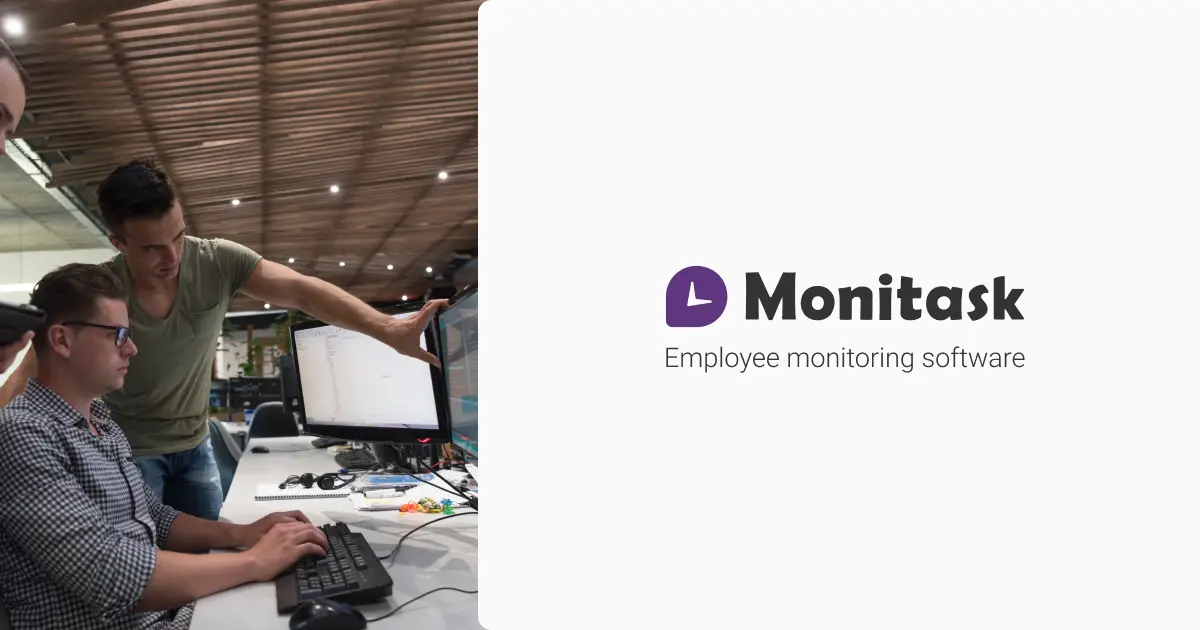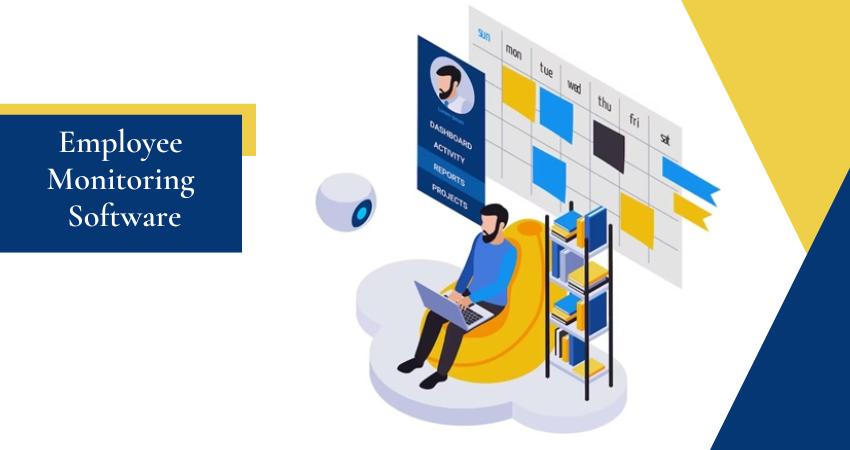Top Tips For Deciding On Employee Monitoring Software
What Exactly Is Employee Monitoring Software And How Can I Choose The Right One?The term employee monitoring software is used to describe an application that businesses employ to track their employees' actions when they work. It allows employers to gather data on various aspects of employees' behavior including internet use and application usage, keystrokes as well as screenshots. The main goal of software for monitoring employees is to improve productivity, guarantee the compliance of policies, safeguard sensitive information, and address concerns regarding security. Several factors should be considered when selecting an employee monitoring program. Be aware of these important points: Features- Determine the features you need based on the requirements of your company. Common features include monitoring activity, blocking websites, keystroke logging, application usage tracking as well as email monitoring and report generation. Prioritize features that are aligned to your monitoring objectives.
Privacy and Compliance - Make sure the program complies to ethical and legal guidelines regarding employee monitoring. Be aware of the regulations and laws applicable to your area. This includes data protection and privacy laws. You should look for software that is clear and customizable features that ensure the privacy rights of employees.
User-Friendliness. Think about the user-friendliness and the accessibility of the software. A user-friendly interface and straightforward setup process will save time and simplify implementation. You should look for dashboards that are customisable and reporting tools which allow you to effortlessly interpret the data collected.
Integrity and compatibility - Check that the software is integrated seamlessly with your existing infrastructure and other systems you use. These include operating systems as well as email clients. Compatible monitoring ensures smooth operations without causing disruptions to day-today operations.
Data Security: Examine the security features of the software to secure the data collected. Data encryption, data storage in a secure location access control, as well as compliance with security standards are essential. Make sure that the software provider has robust security practices and a good track record in data protection.
Scalability- You should consider the software's scalability to accommodate the expansion of your business. If you are planning to increase your team or open new sites in the near future, choose a software solution that can easily be increased to meet changing requirements.
Reporting and Analytics - Look at the software's capabilities for reporting. Features that provide a comprehensive view into the productivity of employees, their time management, and trends are important to look for. Customized analytics and reports can help you take informed decisions and identify improvements.
Customer Support - Assess the level of customer service provided by the vendor. Determine their responsiveness, availability and the amount of technical support they provide. Customer support that is prompt and responsive will give you help when issues arise.
Cost- Consider the pricing model for the program, whether it's a one-time purchase or subscription-based. Understanding the pricing structure and the additional costs, such as support, updates or additional features is vital. Be sure to weigh the price of your product with its value and features.
Transparency and employee communication - Communicate clearly with your employees on the introduction of monitoring software. Explain in detail the purpose, scope and expectations of the surveillance. Discuss any concerns they might have and make sure they understand the ways in which they can be assured of their privacy.
When you take these aspects into consideration it is possible to make a well-informed choice and select a monitoring system that meets your company's requirements while respecting employee privacy and the law. Check out the best employee monitoring company for website advice.

What Are The Features And Features Of The Software To Track Employees?
The software comes with a wide range of options that let you to track and analyze the activities of employees. Different software solutions may offer distinct features, however these are the most popular. It gives a complete overview of the time that employees spend at work.
Keystroke Logging Keystroke logs track every single keystroke that employees make. It can be used for identifying productivity bottlenecks, detecting unauthorised activities, and gathering evidence in the event of an investigation.
Screenshots and Screen RecordingScreen Recording and Screenshots - Certain software can capture screenshots of employee computer screens regularly or record the screens of employees in real time. This feature can be useful in monitoring employee performance, checking compliance or troubleshooting problems.
Internet Usage Tracking - This feature monitors the internet activities of employees, including sites visited, search downloads and queries. It can help identify inappropriate browsing or security threats.
Application Usage Tracking- This feature tracks the applications that are used during work hours by employees. It allows you to determine which applications are the most popular, and helps to identify inappropriate or illegal applications.
Email Monitoring – Email monitoring lets employers keep track of employee email to monitor received and sent messages as well as content from emails. It's a great method to enforce policies of the company to safeguard data and investigate suspicious activities.
Tracking Documents and Files- This feature tracks access to files as well as modifications and transfers. It protects sensitive data as well as monitor work collaboratively done by document and ensure compliance with privacy policies for data security.
Remote Monitoring- Remote monitoring capabilities allow employers to supervise employees working remotely or in various locations. Employers can track employees' activities and ensure their productivity regardless of the place they're located.
Productivity Analysis. Monitoring programs for employees typically include features for productivity analysis that provide insight into employees' patterns of work and productivity. These analyses help identify areas of improvement and help optimize workflow.
Reporting and Analytics - Rich analytics and reporting tools create detailed reports, including visualizations of data collected. These reports provide valuable insight into the performance of employees as well as resource allocation and time management.
Compliance and Policy Management - Software solutions can be adapted to ensure compliance with company policies, regulations and other industry standards. They allow employers to define and enforce policies pertaining to acceptable computer use Internet access, acceptable usage, and data security.
Alerts and Notifications: Alerts and notifications alert managers or employers when certain situations or events occur. They can alert to excessive internet use, attempts to access restricted sites, or unusual behavior.
It is important to be aware that these features will vary dependent on the software you select. Think about features that can aid you in achieving your goals for monitoring and also comply with the ethical and legal requirements in your region. Check out the top time tracking monitoring software for website examples.

What Is The Compliance And Privacy Law Regarding Employee Monitoring Software?
Compliance with privacy and compliance laws is a critical aspect of software for monitoring employees. The legal requirements for compliance will differ from one jurisdiction to the next, however here are some common ways that software for monitoring employees respects the laws on privacy and compliance: Consent and Notice - A majority of jurisdictions require an informed consent from employees and prior notice about the monitoring activity. The tools used to monitor employees usually have features which allow employers to communicate with their employees in a clear and concise manner. This might include sending written notices, obtaining consent from consent forms or preparing an employee handbook that outlines monitoring procedures.
Transparent Monitoring Policies- Employee monitoring tools encourage transparency. They ensure that employees know what kinds of data are being gathered and why, as well in the scope of monitoring. Employees can better be aware of their privacy rights and the limitations of monitoring when the policies are clear and comprehensive.
Data minimization is usually used by software for employee monitoring to ensure the compliance of privacy laws. The software gathers and stores only necessary information, while eliminating unnecessary or overly detailed information. By limiting data collection to only the necessary to monitor purposes, this software reduces privacy risk and promotes compliance.
Anonymization and Aggregation: Some employee monitoring software can anonymize or aggregate information to ensure privacy further. Anonymization erases personally identifiable information (PII) from data, making it impossible to associate information with specific individuals. Aggregation blends data from several employees to give insights on an aggregate level, without single out specific individuals.
Secure Data Store and encryption: Employee monitoring software ensures that the security of data collected first. Data is protected by secure storage practices for data and encryption methods. Secure data is also important during transport, and in the rest of the data.
Access Controls, Restricted Permissions – In order to ensure compliance with regulations, employee monitoring software offers granular permissions and access controls. Employers have the option to restrict access to monitoring data only to individuals with legitimate needs for example HR personnel or administrators designated by the company.
Employee Rights and Remedies - Adherence to privacy and compliance laws requires respect for employees' rights. Employee monitoring software usually includes options that allow employees to view and rectify their own monitoring records and also submit complaints. This software allows employees to claim their rights and pursue remedies in cases of privacy breaches.
Conformity to Data Protection Regulations – Employee monitoring software is designed accordance with applicable data privacy regulations, including the General Data Protection Regulations (GDPR) in the European Union, or the California Consumer Privacy Acts (CCPA) in the United States. It is accomplished by implementing suitable measures to protect personal data, while respecting rights of the data subject, as well as making sure that the use of data is legal. data.
It is important to note that while monitoring of employees can help companies adhere to regulations and laws, they must also consult lawyers and keep up-to-date with local laws and regulations. Privacy and compliance laws require a comprehensive strategy that includes more than software. It also requires clear policies, ongoing compliance monitoring, and employee education. Have a look at the top rated employee monitoring company for website examples.